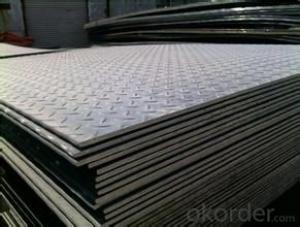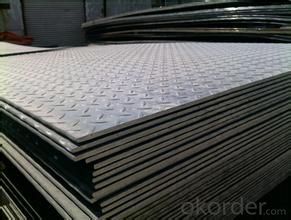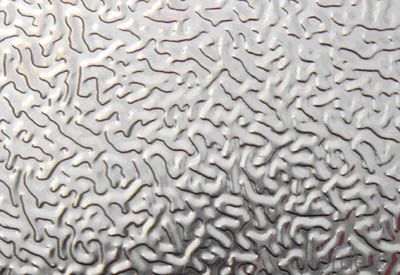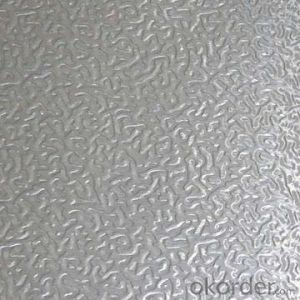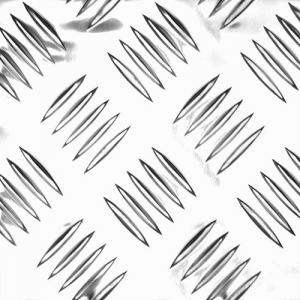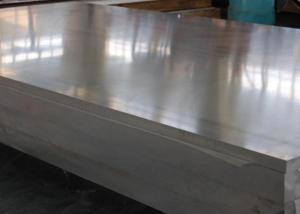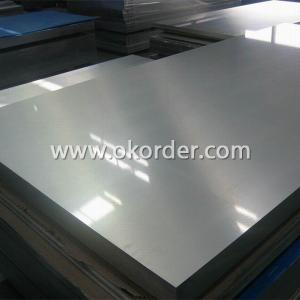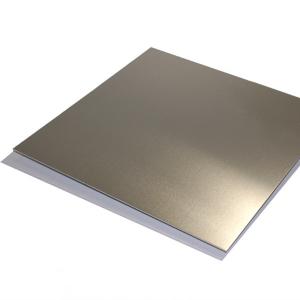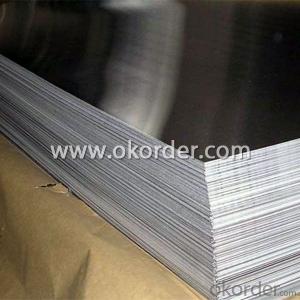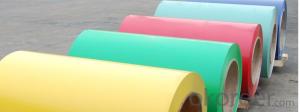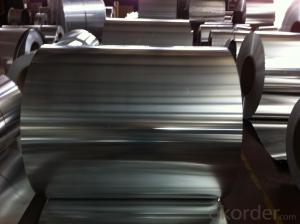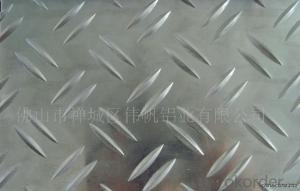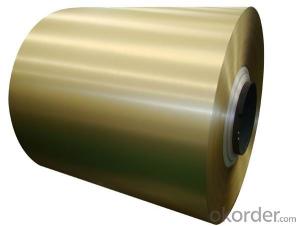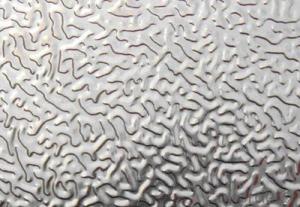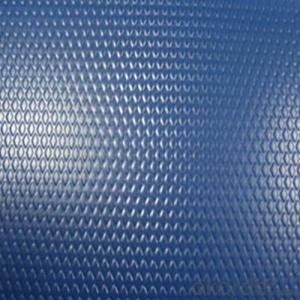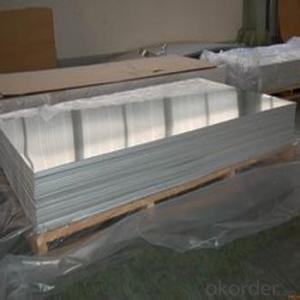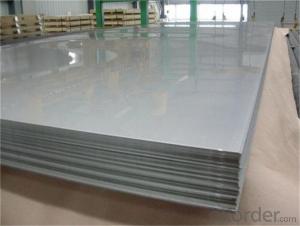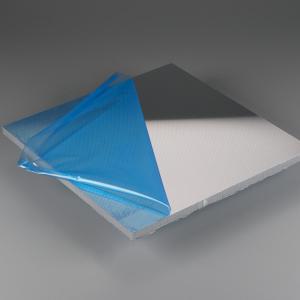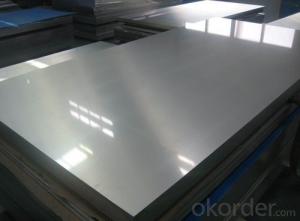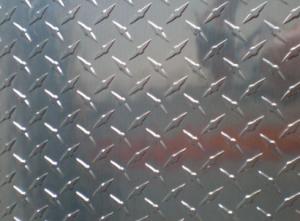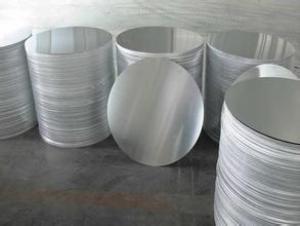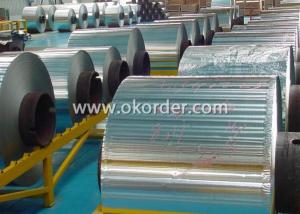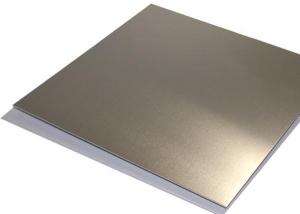Aluminum Sheets in West Virginia with a Wide Range of Properties - Embossed Aluminum Sheets
- Loading Port:
- Shanghai
- Payment Terms:
- TT OR LC
- Min Order Qty:
- 5 m.t.
- Supply Capability:
- 5000 m.t./month
OKorder Service Pledge
OKorder Financial Service
You Might Also Like
Aluminium alloys with a wide range of properties are used in engineering structures. Alloy systems are classified by a number system (ANSI) or by names indicating their main alloying constituents (DIN and ISO).
The strength and durability of aluminium alloys vary widely, not only as a result of the components of the specific alloy, but also as a result of heat treatments and manufacturing processes. A lack of knowledge of these aspects has from time to time led to improperly designed structures and gained aluminium a bad reputation.
One important structural limitation of aluminium alloys is their fatigue strength. Unlike steels, aluminium alloys have no well-defined fatigue limit, meaning that fatigue failure eventually occurs, under even very small cyclic loadings. This implies that engineers must assess these loads and design for a fixed life rather than an infinite life.
Another important property of aluminium alloys is their sensitivity to heat. Workshop procedures involving heating are complicated by the fact that aluminium, unlike steel, melts without first glowing red. Forming operations where a blow torch is used therefore require some expertise, since no visual signs reveal how close the material is to melting. Aluminium alloys, like all structural alloys, also are subject to internal stresses following heating operations such as welding and casting. The problem with aluminium alloys in this regard is their low melting point, which make them more susceptible to distortions from thermally induced stress relief. Controlled stress relief can be done during manufacturing by heat-treating the parts in an oven, followed by gradual cooling—in effect annealing the stresses.
The low melting point of aluminium alloys has not precluded their use in rocketry; even for use in constructing combustion chambers where gases can reach 3500 K. The Agena upper stage engine used a regeneratively cooled aluminium design for some parts of the nozzle, including the thermally critical throat region.
Another alloy of some value is aluminium bronze (Cu-Al alloy).
We provide a full range of precision aluminum strip for almost any application. We produce aluminum strip in a wide variety of alloys, including clad composites. Our aluminum strip can be produced in standard dimensions or custom made to your special requirements. We produce both imperial and metric units. We manufacture in compliance with the main international specifications, and tighter tolerances or custom tempers are available upon request. We offer various surface conditions, custom finishes (painting, anodizing, embossing), special processing, and multiple packaging options to meet our customer's unique requirements. The following is a summary of our capabilities.
Manufactured in compliance with the main international specifications and standards, including: Aluminum Association, ASTM, EN, and DIN.
We can also manufacture in compliance with other international standards including:ASME, SAE, AMS, AWS, FED, MIL, QQ, ISO, BS, AFNOR, JIS and GOST.
Manufactured in compliance with the main international specifications and standards.
Tighter tolerances are available upon request.
Aluminium (or aluminum; see spelling differences) is a chemical element in the boron group with symbol Al and atomic number 13. It is a silvery white, soft, ductile metal. Aluminium is the third most abundant element (after oxygen and silicon), and the most abundant metal in the Earth's crust. It makes up about 8% by weight of the Earth's solid surface. Aluminium metal is so chemically reactive that native specimens are rare and limited to extreme reducing environments. Instead, it is found combined in over 270 different minerals.The chief ore of aluminium is bauxite.
Aluminium is remarkable for the metal's low density and for its ability to resist corrosion due to the phenomenon of passivation. Structural components made from aluminium and its alloys are vital to the aerospace industry and are important in other areas of transportation and structural materials. The most useful compounds of aluminium, at least on a weight basis, are the oxides and sulfates.
Despite its prevalence in the environment, no known form of life uses aluminium salts metabolically. In keeping with its pervasiveness, aluminium is well tolerated by plants and animals. Owing to their prevalence, potential beneficial (or otherwise) biological roles of aluminium compounds are of continuing interest.
The earliest citation given in the Oxford English Dictionary for any word used as a name for this element is alumium, which British chemist and inventor Humphry Davy employed in 1808 for the metal he was trying to isolate electrolytically from the mineral alumina. The citation is from the journal Philosophical Transactions of the Royal Society of London: "Had I been so fortunate as to have obtained more certain evidences on this subject, and to have procured the metallic substances I was in search of, I should have proposed for them the names of silicium, alumium, zirconium, and glucium."
Davy settled on aluminum by the time he published his 1812 book Chemical Philosophy: "This substance appears to contain a peculiar metal, but as yet Aluminum has not been obtained in a perfectly free state, though alloys of it with other metalline substances have been procured sufficiently distinct to indicate the probable nature of alumina."[69] But the same year, an anonymous contributor to the Quarterly Review, a British political-literary journal, in a review of Davy's book, objected to aluminum and proposed the name aluminium, "for so we shall take the liberty of writing the word, in preference to aluminum, which has a less classical sound."
The -ium suffix conformed to the precedent set in other newly discovered elements of the time: potassium, sodium, magnesium, calcium, and strontium (all of which Davy isolated himself). Nevertheless, -um spellings for elements were not unknown at the time, as for example platinum, known to Europeans since the 16th century, molybdenum, discovered in 1778, and tantalum, discovered in 1802. The -um suffix is consistent with the universal spelling alumina for the oxide (as opposed to aluminia), as lanthana is the oxide of lanthanum, and magnesia, ceria, and thoria are the oxides of magnesium, cerium, and thorium respectively.
The aluminum spelling is used in the Webster's Dictionary of 1828. In his advertising handbill for his new electrolytic method of producing the metal in 1892, Charles Martin Hall used the -um spelling, despite his constant use of the -ium spelling in all the patents[58] he filed between 1886 and 1903. It has consequently been suggested[by whom?] that the spelling reflects an easier-to-pronounce word with one fewer syllable, or that the spelling on the flyer was a mistake.[citation needed] Hall's domination of production of the metal ensured that aluminum became the standard English spelling in North America.
- Q: Is it possible to use aluminum sheets in the manufacturing process of solar panels?
- <p>While aluminum sheets can be used in the construction of solar panels, they are not the primary material for making the solar cells themselves. Aluminum is typically used for the frame or backsheet to provide structural support and protection. The actual solar cells are made from materials like silicon, which is capable of converting sunlight into electricity. So, while aluminum plays a role in the assembly of solar panels, it is not used to create the photovoltaic cells that generate power.</p>
- Q: Are there any specific storage requirements for 101 aluminum sheets?
- Specific storage requirements exist for 101 aluminum sheets. To prevent moisture absorption and corrosion, aluminum sheets must be stored in a clean and dry area. Furthermore, a well-ventilated space is necessary to prevent the accumulation of potentially harmful gases. Proper stacking, with sufficient support and spacing, is crucial to prevent bending or deformation. Moreover, to avoid discoloration or fading, it is essential to shield the sheets from direct sunlight. A recommended practice is covering them with a suitable material, such as a plastic sheet or tarp, to offer an additional layer of protection. Ensuring appropriate storage conditions will uphold the quality and integrity of the aluminum sheets for their intended purpose.
- Q: how to find 0.6mm waste strake of aluminum sheet?
- ask door and window maker for some strake.
- Q: Does aluminum resist fire or is it not susceptible to catching fire?
- <p>Aluminum sheets are not fireproof but have a high resistance to fire. They do not burn or support combustion like wood or paper. Aluminum has a melting point of around 660掳C (1220掳F), and it forms a protective oxide layer when heated, which prevents further oxidation and slows down the heating process. While it can get hot and deform under extreme heat, it won't catch fire or contribute to a fire's spread. However, it's important to note that aluminum can still conduct heat, so it's not completely immune to the effects of fire.</p>
- Q: How do aluminum plates open holes?
- Aluminum plastic panels will not crack, this material is not so brittle glass?
- Q: Can aluminum sheets be used for chemical distillation columns?
- Yes, aluminum sheets can be used for chemical distillation columns, particularly for low temperature and non-corrosive processes. However, it is important to note that aluminum may not be suitable for high temperature or corrosive applications, as it can react with certain chemicals and corrode. In such cases, alternative materials like stainless steel or glass may be more appropriate.
- Q: Some say you should use the 'dull' side of aluminum foil when cooking etc. There's something potentially bad about the shiny side.True or not?
- the manual to my cooker says not to use foil because of heat damage (presumably the possibility that all that reflection of heat will make it too hot under the grill). So if nothing else you could invalidate your warranty.
- Q: How to mix solid aluminium sheet with solid copper sheet (using heat?) to make a compound.
- As copper and aluminum are both metals and both have positive charges, you can not form a compound with them. You can, however, create an alloy out of them.
- Q: Are aluminum sheets suitable for decorative paneling?
- Indeed, decorative paneling can be achieved with the use of aluminum sheets. With its versatility and range of benefits, aluminum proves to be a suitable material for such applications. One advantage is its lightweight nature, making it convenient for handling and installation. Consequently, it becomes a practical choice for both interior and exterior paneling. Moreover, aluminum sheets possess durability and resistance to corrosion, allowing them to withstand various weather conditions, including humidity and UV exposure. This outstanding quality ensures that the decorative paneling retains its aesthetic appeal over time, even in high-traffic areas. Additionally, aluminum sheets provide a sleek and contemporary appearance to any space. They can be easily customized with different finishes like brushed, polished, or anodized, offering limitless design possibilities. Furthermore, the reflective properties of aluminum contribute to the overall visual appeal by creating an illusion of more space and light in a room. Furthermore, it is worth noting that aluminum is a sustainable material that can be fully recycled without compromising its quality. This aspect makes it an environmentally friendly choice for decorative paneling, aligning with the growing trend towards sustainable design. Overall, due to their lightweight nature, durability, versatility in design options, and sustainable properties, aluminum sheets prove to be an excellent option for decorative paneling. Whether for residential or commercial purposes, the addition of aluminum paneling can bring a modern and visually appealing touch to any space.
- Q: Can aluminum sheets be used for electronic devices?
- Yes, aluminum sheets can be used for electronic devices. Aluminum is widely used in the electronics industry due to its excellent conductivity, lightweight nature, and thermal management properties. It is commonly used as a base material for printed circuit boards (PCBs), heat sinks, enclosures, and other components in electronic devices.
Send your message to us
Aluminum Sheets in West Virginia with a Wide Range of Properties - Embossed Aluminum Sheets
- Loading Port:
- Shanghai
- Payment Terms:
- TT OR LC
- Min Order Qty:
- 5 m.t.
- Supply Capability:
- 5000 m.t./month
OKorder Service Pledge
OKorder Financial Service
Similar products
Hot products
Hot Searches
Related keywords
